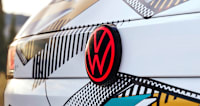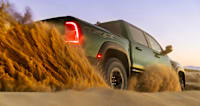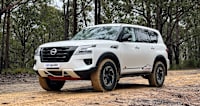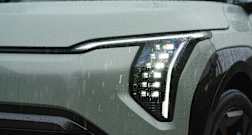The mighty Ferrari is benchmarking its newest supercar against a Chinese upstart.
A Xiaomi SU7 Ultra was seen leaving the Prancing Horse’s headquarters in Maranello.
Ferrari bought the high-performance electric car for testing and development purposes as it prepares its first electric car next year, according to reports.
-
More power than 10 Toyota Corollas combined: New Chinese super EV, the Xiaomi SU7 Ultra, powers up to take on Porsche Taycan Turbo S and Tesla Model S Plaid
-
Ferrari's first electric car is a hatchback? Launch date for groundbreaking EV confirmed but will it beat Aston Martin, McLaren and Lamborghini to the punch?
-
More than 200,000 sold in three minutes! Why is the Xiaomi YU7 such a superstar electric SUV that's becoming BYD and Tesla's biggest nightmare?
The SU7 Ultra is the flagship vehicle from Chinese smartphone producer turned carmaker Xiaomi.
It is the fastest electric car around the Nurburgring and delivers a bonkers amount of grunt.
The SU7 Ultra uses three electric motors to make an insane 1138kW, which is about the same as 10 Toyota Corollas combined and more than the quad-turbocharged W16 engine from the Bugatti Chiron.
Those outputs are good enough to catapult it to 100km/h from a standstill in blistering 1.97 seconds on the way to a top speed of 350km/h.

The SU7 Ultra weighs 1900kg, which makes it a relative lightweight by performance electric car standards and means it tips the scale at about 400kg less than the Taycan Turbo S.
It’s a seriously impressive machine on paper, and one of the world’s most intense car makers has taken notice.
The Italian supercar firm is in the final stages of developing its first electric car, which it will unveil on October 9 this year.

If it is to be a proper Ferrari it’ll need to be better than the competition, and the most advanced electric cars are from China.
Details of the electric car are scarce, but we do know that it will make an “authentic noise”, according to CEO Benedetto Vigna.
A previous report by Reuters speculated its price tag could be as high as €500,000 (A$886,900), although this hasn’t been confirmed directly by Ferrari.

Ferrari is slowly transitioning to low-emissions power, with models such as the plug-in hybrid GTS 296, GTB 296 and SF90 Stradale, making up 51 per cent of its sales in 2024.
The company has no plans to ditch V12-power from its range until it is forced to by various governments.
Meanwhile Xiaomi's SU7 sedan and new YU7 SUV have set the Chinese market on fire, with hundreds of thousands of orders well exceeding the electric upstart's capacity to fill demand.










.jpg)

.jpg)

.jpg)




.jpg)


.jpg)


.jpg)